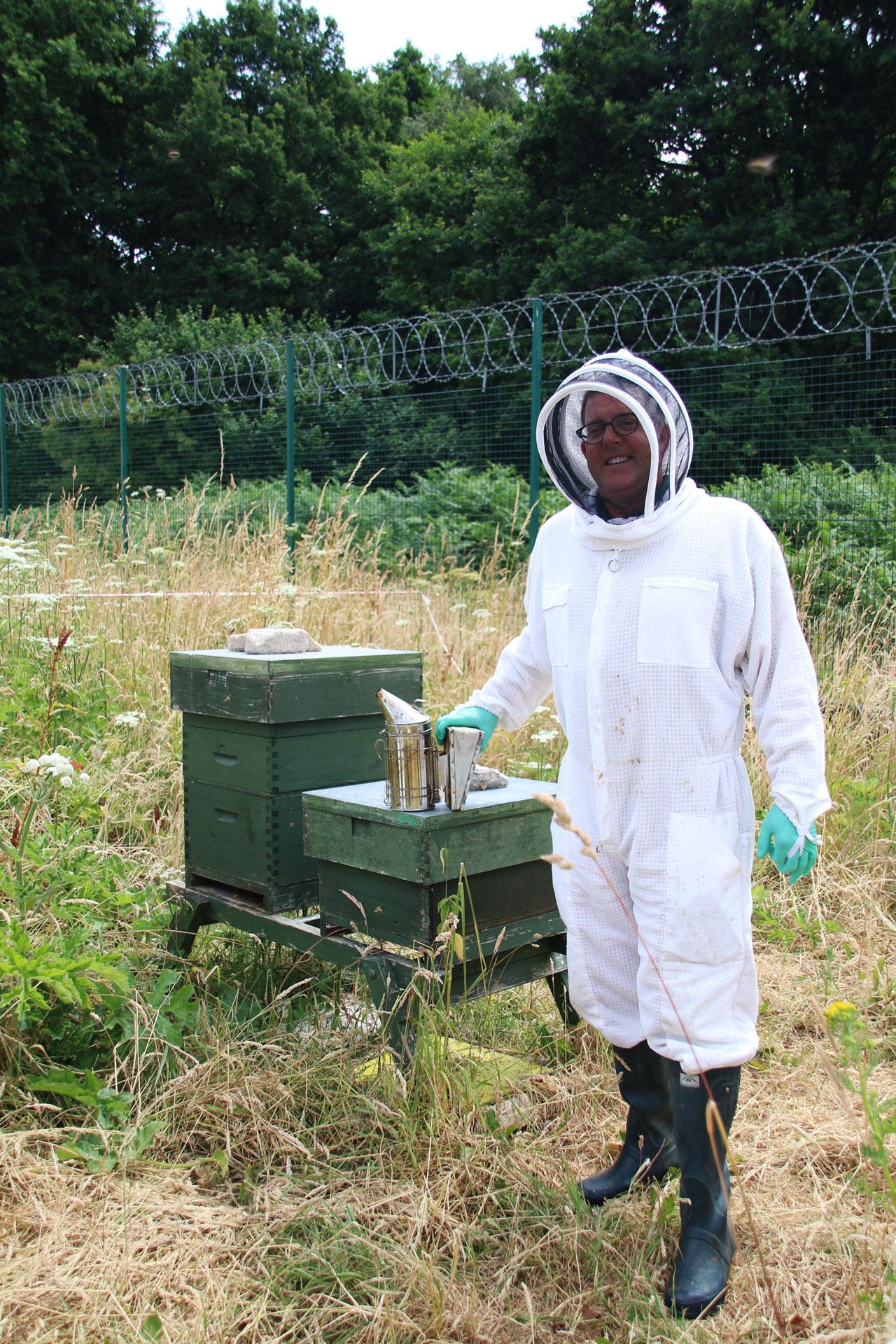To bee, or not to bee? It’s not really a question for Dr Mark Fife, leader of the Genetics and Genomics group at The Pirbright Institute, who has installed two hives on site and whose honey bees (Apis mellifera) produced 42 pounds of honey in the first crop this summer, about enough for 80 small jars.
To a geneticist bees are fascinating for multiple reasons, one being that queen bees are genetically identical to the workers apart from ‘markers’ on DNA molecules called methyl groups—known as DNA methylation. These markers can change the activity of DNA, affecting gene expression, an area of science known as epigenetics. When a larva is selected to become a queen it is fed large quantities of royal jelly, a mouth gland secretion of nurse bees, which causes extensive DNA methylation and triggers the cascade of molecular events necessary for a queen bee to develop.
Unfortunately bee populations are under threat from a variety of sources; pesticides, the Varroa mite (Varroa destructor), which weakens bees by sucking on their fat stores and in the process spreads viruses such as deformed wing virus, and bee brood diseases such as European foulbrood and American foulbrood. “Beekeeping has completely changed because of the Varroa mite”, said Mark Fife. “It is an integrated part of pest management for beekeepers now because there will be Varroa in every hive, but with good management bee health can be maintained”.
Mark Fife became hooked on beekeeping more than 14 years ago after learning about it from a former research assistant. Fife approaches it like a science, keeping a spreadsheet where he logs everything he sees at the hives each time he visits. Looking to pass on his own enthusiasm to other Institute members he established the informal ‘Pirbright Beekeeper’s Club’ thinking he would get about four volunteers. The current membership stands at 38 people, a testament to the growing interest in beekeeping and environmental conservation. “Beekeeping on site is an environmentally responsible thing to do” said Mark Fife.
Highlighting the plight of bees and their role as vitally important pollinators for garden plants, wildflowers and crops, Defra is coordinating an annual national event called Bees’ Needs Week. This year’s event is from 9 – 15 July. The aim is help raise awareness of how everyone can help provide bees and other pollinators with food and a home.
Bees require good local forage—large numbers of the types of plants with flowers they go for. The Pirbright campus has several varieties of plant varieties in the wildflower meadow behind The BBSRC National Vaccinology Centre: The Jenner Building, where there is an abundance of Common Vetch (Vicia sativa) and Common Bird's-foot-trefoil (Lotus corniculatus). Part of the wildflower meadow was awarded to the Institute for winning the Construction Industry Research and Information Association (CIRIA) biodiversity BIG Challenge Awards. The rest of the wildflower planting was donated by construction company John Sisk & Sons, and is haven for wildlife and insects.
Pirbright’s other conservation efforts include activities both on and off campus. The Institute has its own Biodiversity Interest Group; staff members who give up their time to improve the wildlife environment on site, as well as volunteer to help out at the Fox Corner Community Wildlife Area. Further information is available on Environment and Biodiversity work at the Institute.
